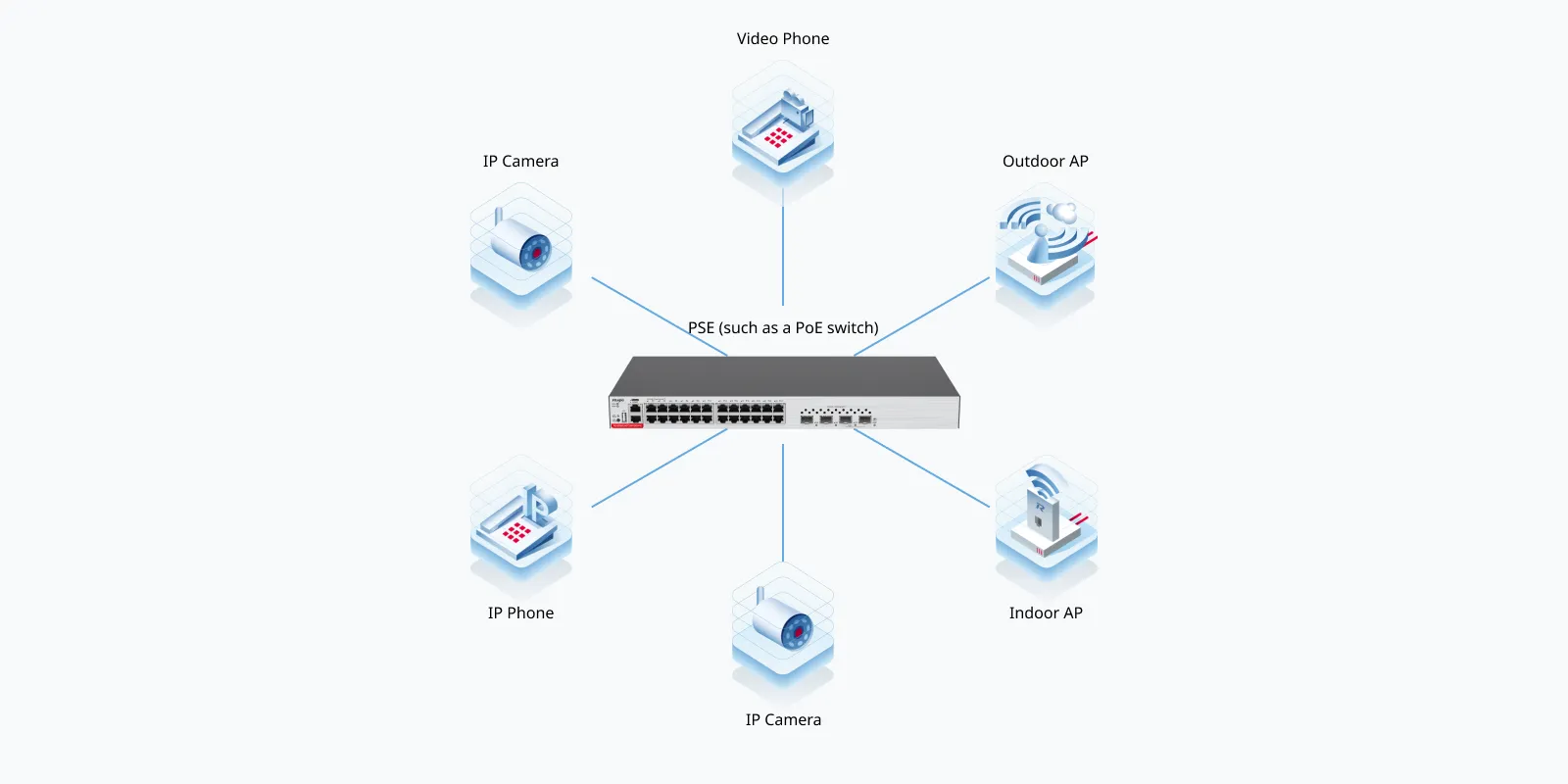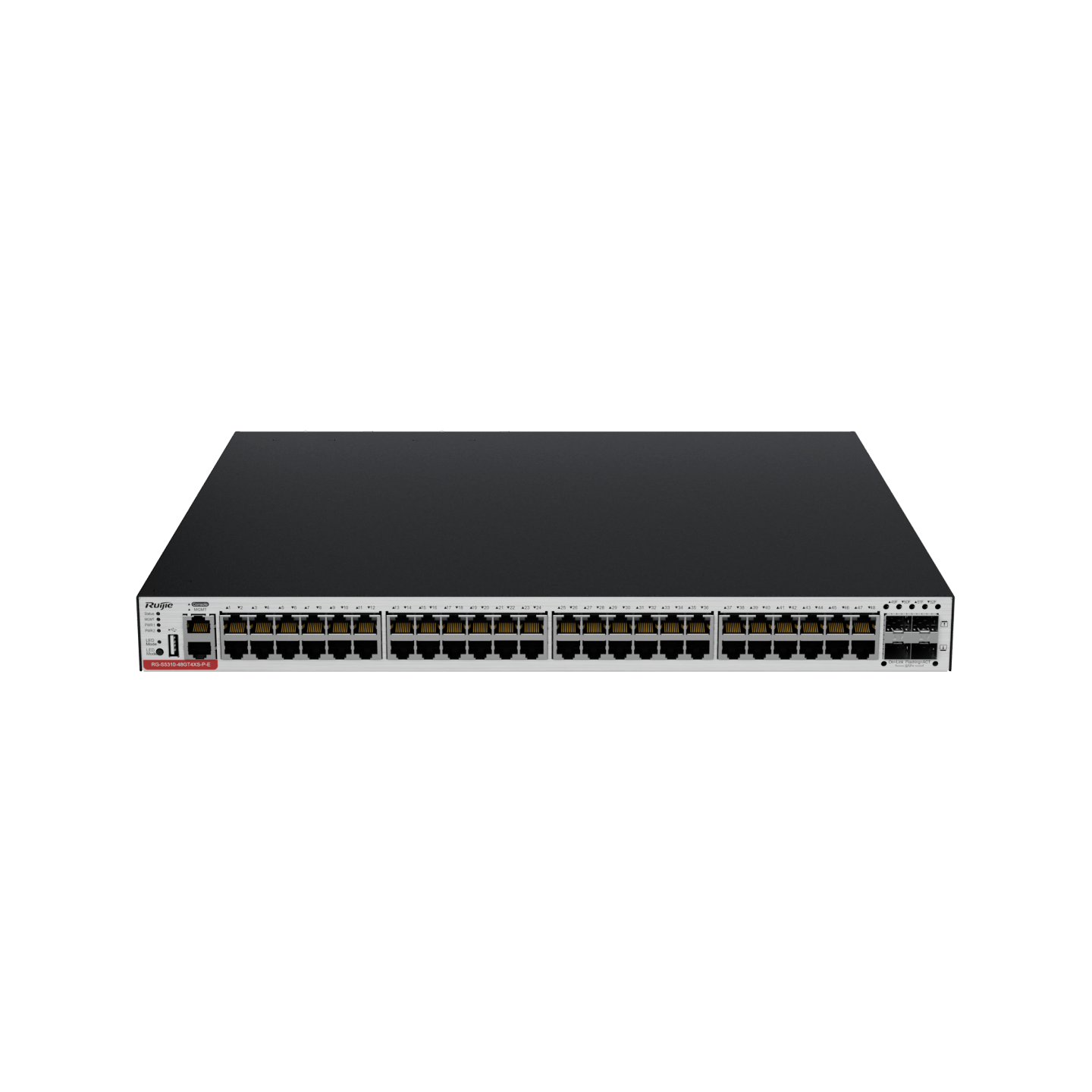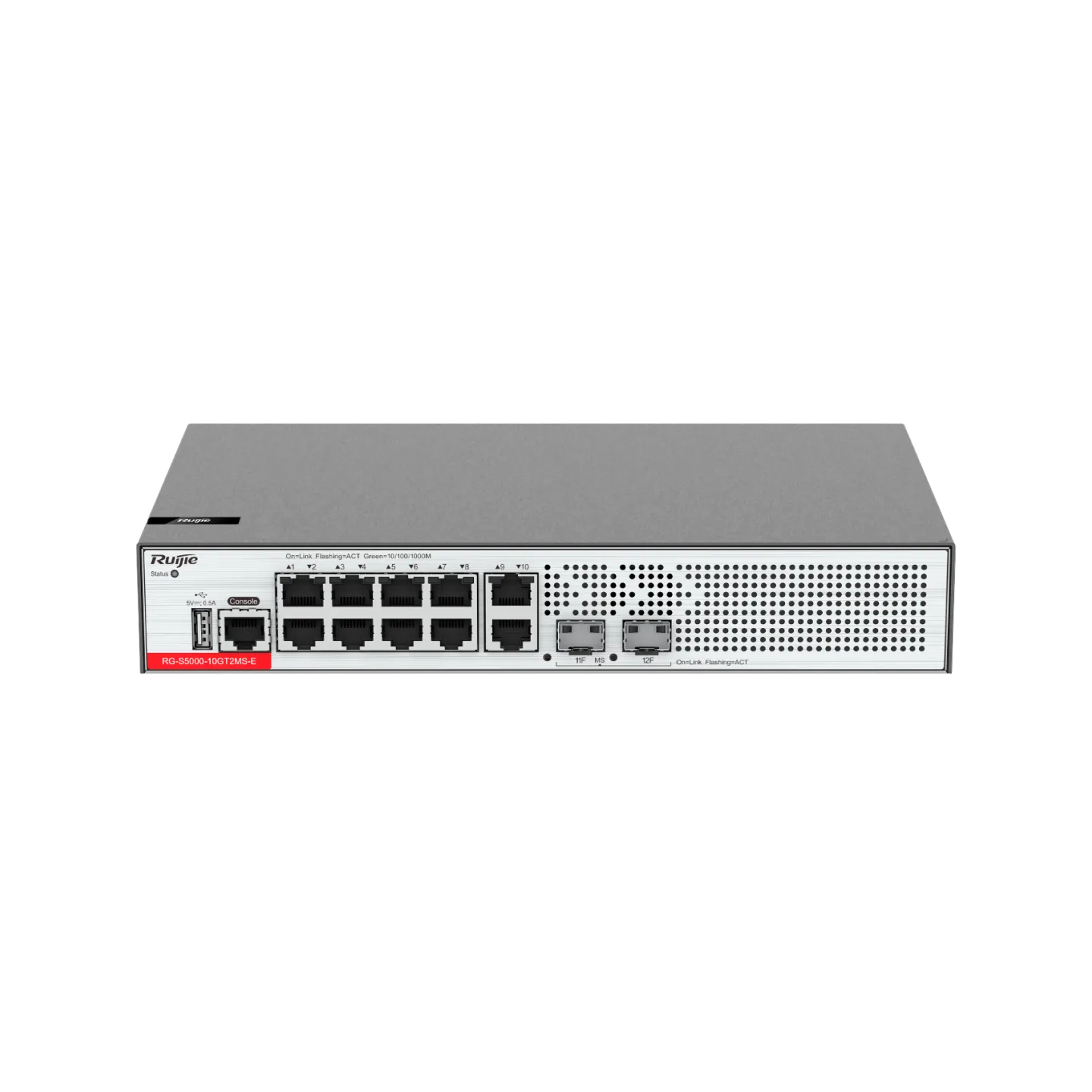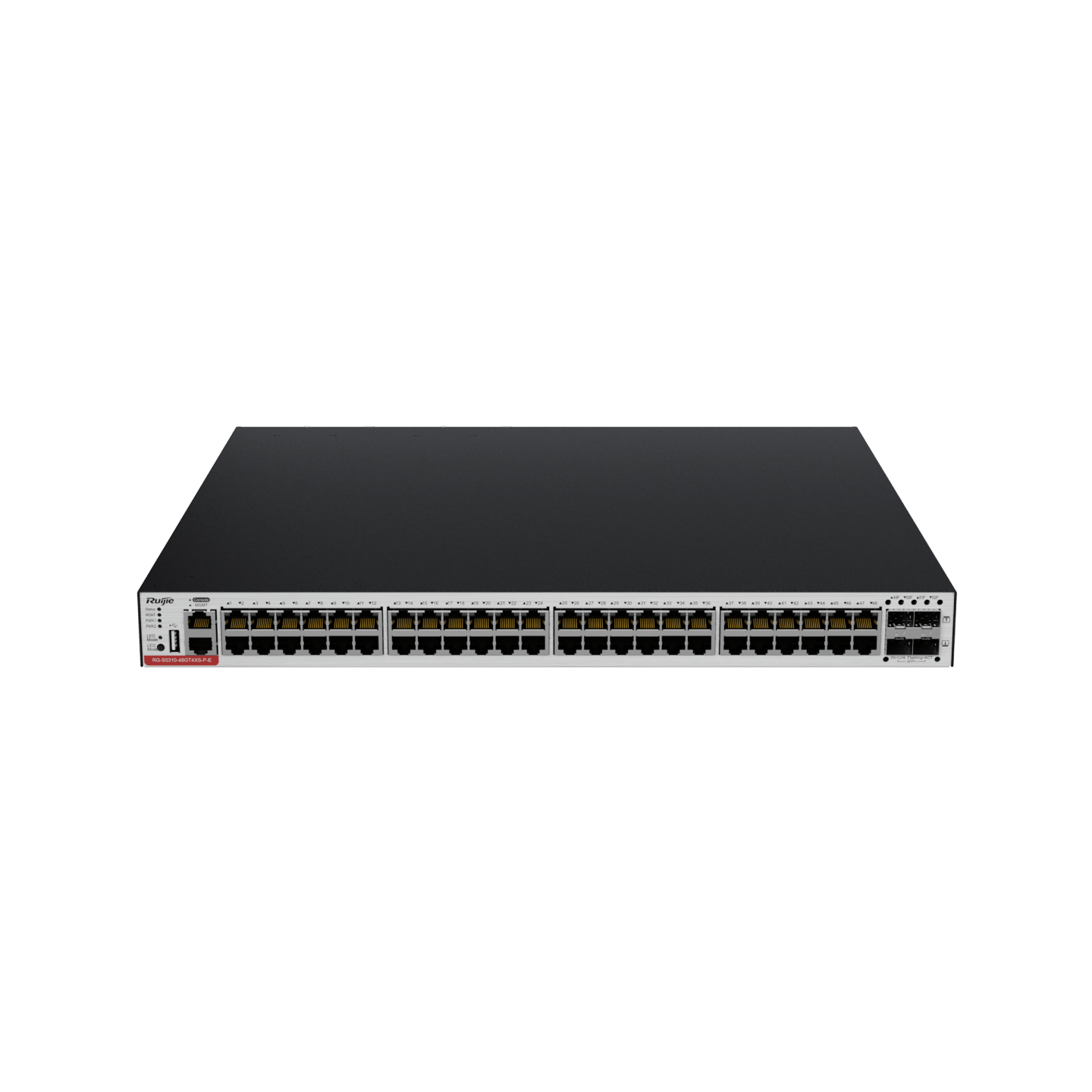I. Technical Background
PoE provides DC power to IP-based devices, such as VoIP phones, access points (APs), and network video recorders (NVRs), while transmitting data signals. This is achieved without any modifications to the existing Ethernet cabling structure. PoE not only maintains compatibility with existing Ethernet devices but also eliminates the need for traditional procedures such as trenching and cable routing. This significantly shortens the construction cycle and reduces costs.
Ⅱ. Roles in a PoE System

Ⅲ. Evolutionary History of PoE
|
Power Supply Technology
|
PoE | PoE+ | PoE++ |
|
Power supply standard
|
IEEE 802.3af | IEEE 802.3at | IEEE 802.3bt |
|
Power supply distance
|
100 m (328.08 ft.)
|
100 m (328.08 ft.)
|
100 m (328.08 ft.)
|
|
Class
|
0-3 | 0-4 | 0-8 |
|
Max. current
|
350mA | 600mA | 1730mA |
|
PSE output voltage
|
44 V DC~57 V DC | 44 V DC~57 V DC | 44 V DC~57 V DC(Type 3 PSE) 52 V DC~57 V DC(Type 4 PSE) |
|
PSE output power
|
≤ 15400 mW | ≤ 30000 mW | 60000 mW(Type 3 PSE) 90000 mW(Type 4 PSE) |
|
PD input voltage
|
36 V DC~57 V DC | 42.5 V DC~57 V DC | 39.9 V DC~57 V DC |
|
Max. PD power
|
12950 mW | 25500 mW | 51000 mW(Type 3 PSE) |
|
Cable requirement
|
N/A
|
Cat5e or higher-category Ethernet cable
|
Cat5e or higher-category Ethernet cable
|
|
Power cable pairs
|
2 | 2 | 4 |
▲Table 1: Comparison of Three PoE Standards
IV. How Does PoE Work?

● Detection
● Classification
|
PoE Technology
|
PoE | PoE+ |
PoE++
|
||||||
|
PD class
|
0 | 1 | 2 | 3 | 4 | 5 | 6 | 7 | 8 |
|
PSE power (W)
|
15.4 | 4 | 7 | 15.4 | 30 | 45 | 60 | 75 | 90 |
|
PD power (W)
|
13 | 3.84 | 6.49 | 13 | 25.5 | 40 | 51 | 62 | 71 |
● Power up
● Power supply
● Disconnection
Ⅴ. Summary
Featured blogs
- CXL 3.0: Solving New Memory Problems in Data Centres (Part 2)
- Ruijie RALB Technology: Revolutionizing Data Center Network Congestion with Advanced Load Balancing
- Multi-Tenant Isolation Technology in AIGC Networks—Data Security and Performance Stability
- Multi-dimensional Comparison and Analysis of AIGC Network Card Dual Uplink Technical Architecture
- A Brief Discussion on the Technical Advantages of the LPO Module in the AIGC Computing Power Network
















